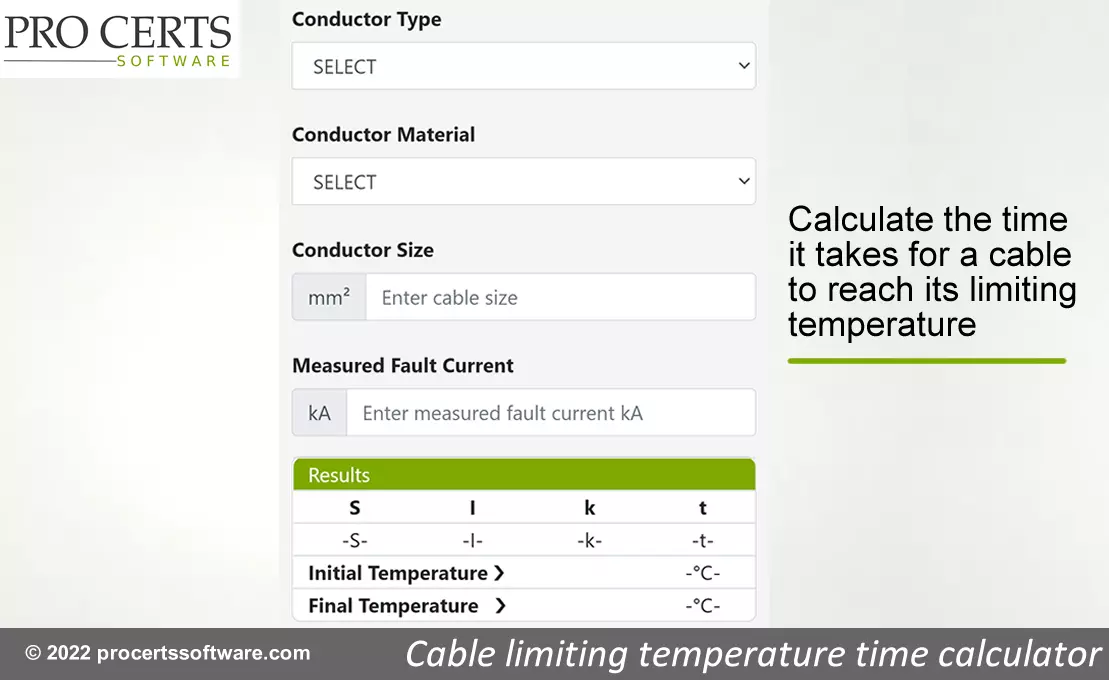BS 7671 434.5.2: A fault occurring at any point in a circuit shall be interrupted (disconnected) within a time such that the fault current does not cause the permitted temperature of any conductor or cable to be exceeded.
434.1 – Determination of prospective fault current: The prospective fault current shall be determined at every relevant point of the installation. This shall be done by calculation, measurement or by enquiry.
The electrical industry consensus seems to be the measurement method (where possible & safe to do so) is preferred. The by enquiry method is relying on a 3rd party’s information being correct which could be out of date. The calculation method leaves room for calculation errors.
To check compliance with 434.5.2 we need to calculate the time in which a given fault current will raise the live conductors temperature from the highest permissible temperature (in normal use) to the limiting temperature.
We then need to compare that calculated time against the actual circuit disconnection time to ensure the actual disconnection time is less than the calculated time it will take for the conductor or cable to reach the limiting temperature.
If a circuit disconnection time is greater (longer) than the time it takes for a cable or conductor to reach its limiting temperature then damage to the cable or conductor will occur because the limiting temperature of the conductor / cable will be exceeded.







